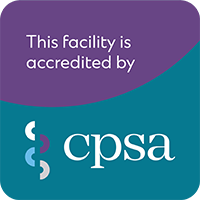This week is a privilege. I am attending the World Congress of Pain, whereby 3500 delegates from 102 countries come and share their passion for pain. There are basic scientists, clinicians, academics, imagers, interventionists, research staff, students and people with lived experiences of pain (PWLE). All are dedicated in understanding pain further to assist the broader community in their journey to a rewarding life. It is also the 50th anniversary of IASP. I have attended 8 congresses in person and the one virtual congress in 2021, so it is a favourite. Catching up with professional colleagues from around the world is probably the highlight as I seek answers on study methodology and missing links to questions that percolate around this nerdy brain of mine.
Highlights so far:
Non Invasive Brain Stimulation
Four solid hours of non-invasive brain stimulation soon woke me up. As pain is a widely distributed central phenomenon, much recent research has focused on modulating pain in the CNS, so rather than rely on medications, why not pump some electricity into the brain to address aberrant central pain processing. From rTMS to tDCS and taVNS, a cornucopia of brain stimuli were provided to stimulate our thoughts on pain relief. I was unaware of the extensive research investigating the effect of rTMS for the treatment of intractable neuropathic pain. Treatment of nociceptive pain does not appear as promising, although much work remains to match stimulus locations with PWLE pain phenotypes. Transauricular vagal nerve stimulation was an eye opener. Quite a simple application of current over the vagal nerve supply in the auricle assists with parasympathetic tone (rest and digest). The research here is ‘scant’, but some promising applications exist, with some preliminary research demonstrating improvements in parasympathetic function – providing validation of its underlying mechanisms. The effects on pain and disability are less well established. Finally, tDCS is a simple device allowing electric current to move from the anode to the cathode. We recently completed a clinical trial in people with cervicogenic headaches. The manuscripts have been submitted for publication, so further details will be available when they are accepted. So, watch this space – but suffice to say, the results of this trial provide confidence in pursuing further studies for wider acceptance.
Prognostic Risk Factors – Can We Trust Them?
Some sobering research demonstrated that although prognostic risk tools are accurate in predicting non recovery, when subsequent treatment is applied to those at moderate to high risk, results are less than promising. The reasons for this are variable – the tools are quite crude and don’t address underlying individual mechanisms responsible for a person’s pain that may need addressing. They are also not 100% sensitive, indicating that people may be incorrectly classified to certain risk categories. Also, as previously mentioned, many people simply don’t recover. More broadly, people with moderate to severe symptoms are complex to manage, and the appropriate treatment for these people are yet to be established, so it is likely not surprising that it is challenging to assist these people with their recovery.
Elsewhere, a workshop on descending pain modulation was enlightening. I’ve touched on that previously and thankfully there wasn’t ‘new’ information to absorb, although the finer details are beginning to emerge. Time to get some rest. This is a long week with long days. Back tomorrow with a summary of my contribution to this year’s congress…





